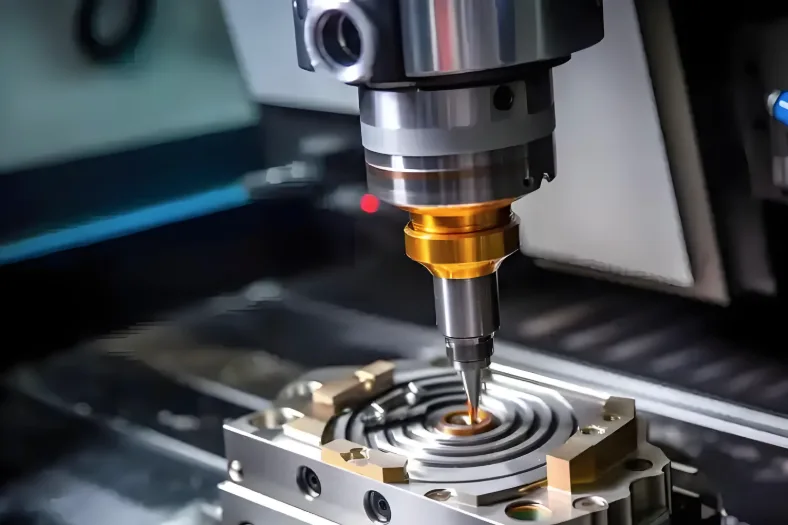To ensure efficiency, precision, and quality in batch part processing, businesses must meticulously prepare. This involves developing and optimizing processing technology, procedures, and tool selection. First-piece processing validates these preparations. This proactive step aims to prevent batch scrapping, control costs, and ultimately enhance economic benefits.

The Significance of First-Piece Processing
Before mass production on CNC lathes, first-piece processing is essential. It verifies the program’s correctness, along with the tools, cutting parameters, and overall processing technology. This allows for the timely detection and improvement of potential defects. Ultimately, it ensures efficient, high-precision, and waste-free mass production, maximizing corporate benefits.
The Necessity of First-Piece Processing
In single-piece CNC lathe production, manufacturers often choose direct processing for speed. This method places less stringent demands on processes and parameters and heavily relies on the operator’s experience. However, this approach is unsuitable for mass production. Without first-piece processing validation, manufacturers face a high risk of systematic errors, significant product batch failures, and low production efficiency. Therefore, first-piece processing is an indispensable step when working with large quantities of parts on CNC lathes.

Unreasonable Processing Technology
In the mass production of CNC lathe parts, improperly defined processing technology can easily lead to errors across the entire batch. This includes issues like incorrect datum selection or flawed process sequencing. Such problems can result in low efficiency and inflated costs. Processes not validated by first-piece processing often lead to a low product qualification rate, substandard quality, and severely compromised production efficiency.

Unreasonable Accuracy Assurance Methods
Both geometric errors and dynamic errors influence part machining accuracy. Geometric errors are inherent in machine tools, tools, and fixtures. Dynamic errors are caused by factors like clamping deformation, cutting forces, and tool overheating. While manufacturers can analyze and compensate for geometric errors, dynamic errors are difficult to predict accurately before actual machining. This makes developing reliable accuracy assurance methods to guarantee product quality a significant challenge.
Unreasonable Cutting Parameters
Defining reasonable cutting parameters aims to maximize efficiency and minimize cost while maintaining quality. This involves complex factors such as part material, tool type, and desired production efficiency. Although initial analyses and calculations are performed, actual results often vary. Without real-world processing validation, manufacturers find it difficult to determine optimal cutting parameters, which in turn impact production efficiency and product quality.
Implementation Strategy for First-Piece Machining
Preparation for First-Piece Processing
Optimizing cutting parameters is crucial for successful machining. While theoretical calculations provide a starting point, real-world observation is key. For roughing, ensure maximum safe and effective material removal. For finishing, fine-tune parameters to achieve peak precision. Always consider tool wear and batch size when setting cutting parameters; they must be suitable for the entire production run to ensure efficiency and quality, not just a single piece.
First-Piece Processing Execution
Despite program simulations, errors or irrationalities in CNC lathe programs can still lead to part machining failures or even safety incidents like tool or machine collisions. During first-piece processing, operators must meticulously check program points, instructions, and overall integrity to ensure smooth operation. This diligence guarantees the seamless progression of subsequent mass production.
To achieve precision in finishing, analyze the geometric errors of machine tools, tools, and fixtures. Consider both equipment capabilities and part structure. Simultaneously, by observing the machining process and measuring parts, identify and compensate for dynamic errors. Factor in tool wear and batch processing demands to ensure the final product meets all quality standards.
Analysis and Optimization
Upon completing the first piece processing, thoroughly analyze the parts and the machining process. Identify and address any issues, such as program errors, unreasonable cutting parameters, out-of-tolerance dimensions, or flawed processing technology. Evaluate whether the defined processes, cutting parameters, and precision assurance methods align with the demands of mass production. Even if the first piece is qualified, continuous efforts to improve production efficiency are vital. The goal is to optimize the entire process—including the established processing technology, precision methods, cutting parameters, and programming—to maximize production benefits while ensuring high-quality output for large batches.
Conclusion
First-piece processing is indispensable in the mass production of CNC lathe parts. It empowers manufacturers to record, analyze, and refine cutting parameters, processing procedures, overall processes, and precision assurance methods, leading to a significant improvement in part qualification rates.
